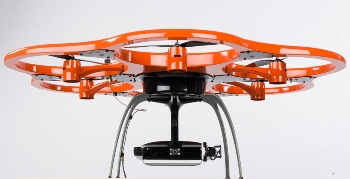Feb 6 2014
Leica Geosystems’ partner Aibotix GmbH has released version 2 of its bestselling hexacopter Aibot X6.

The lightweight unmanned aerial multicopter system is an ideal complementary solution in Leica Geosystems’ airborne solutions strategy providing distinct advantages for safe 3D mapping and inspection of inaccessible infrastructure such as power lines, bridges, dams and power plants.
The Aibot X6 V2 features a new electronics design that supports more safety features, increased monitoring of operation parameters and a significantly easier operation.
Collecting data and extracting information with an easy-to-operate solution
“Our customer base are professionals, that are not only known for testing their equipment in the most harsh environments but who also require the highest accuracy and best data to extract information that will support their decisions, says Ruedi Wagner, VP of Geospatial Solutions at Leica Geosystems. “With the new Aibot X6 they can get that in a solution, that is really easy to operate with the highest degree of safety. The Aibot X6 lets users focus on the job, not the flying.
“This is making it even easier for non-expert flyers to collect data and extract information in the most difficult terrain, widening the breadth of opportunities and applications further”, says Joerg Lamprecht, CEO of Aibotix.
Safe mission completion in critical terrain
New features include an automatic take-off and landing process by the push of a button, which simplifies operation and reduces risk during those critical moments of a flight mission. During operation, a limited space can be defined in which the Aibotix can be manually controlled, significantly reducing any potential dangers during training and mission execution in critical terrain. In addition to the autonomously executed waypoint flight, waypoints can now be entered or changed dynamically. The Aibot X6 V2 unique interface combined with an improved payload capacity to 4kg allows the integration of almost any payload and additional sensors, creating nearly unlimited opportunities for data acquisition and applications. In the future, the new architecture will allow the integration of an RTK GNSS receiver, affording the operator unprecedented accuracy in positioning and guidance.